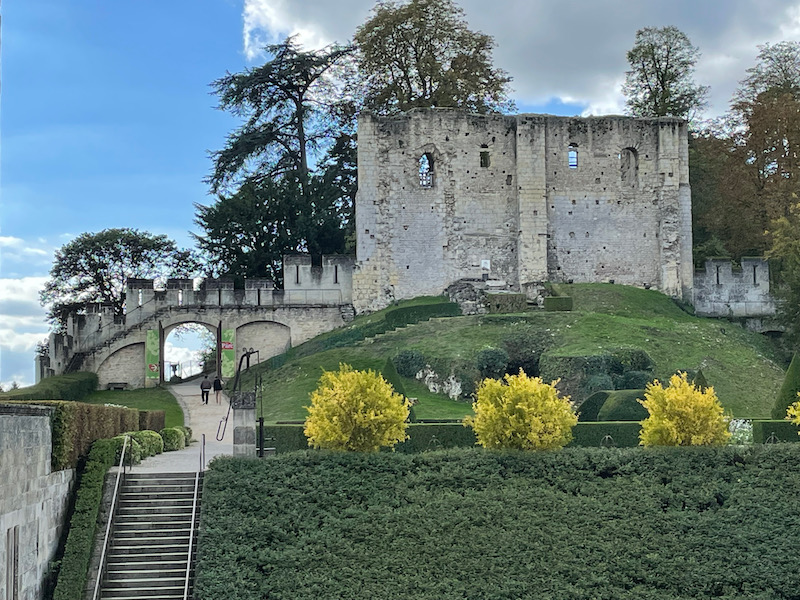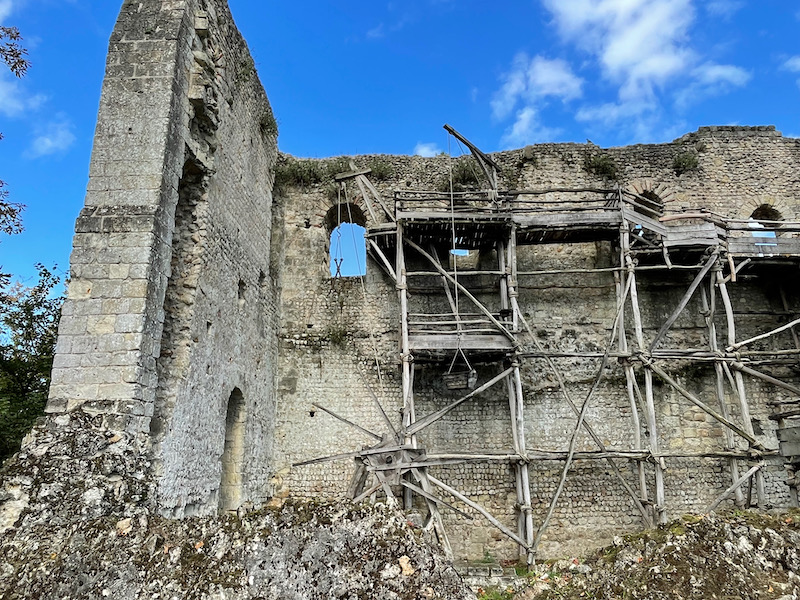Our Blog - Loire Valley Trip - Chateau de Langeais, France, France
We stayed in the town of Langeais and didn't realize it had a Chateau until we drove past it. While not originally on our itinerary, we decided that it was too nice to pass by\\up.
In 1465, Louis XI decided to have a new château built in Langeais. Its architecture reflects the changes taking place as the 15th century drew to a close. On this side, the façade has all the attributes of a fortified castle: huge towers, a drawbridge, and a parapet walk on machicolations (this is the walkway that you can see around the top, called the parapet, with openings on the floor at each of the supports).
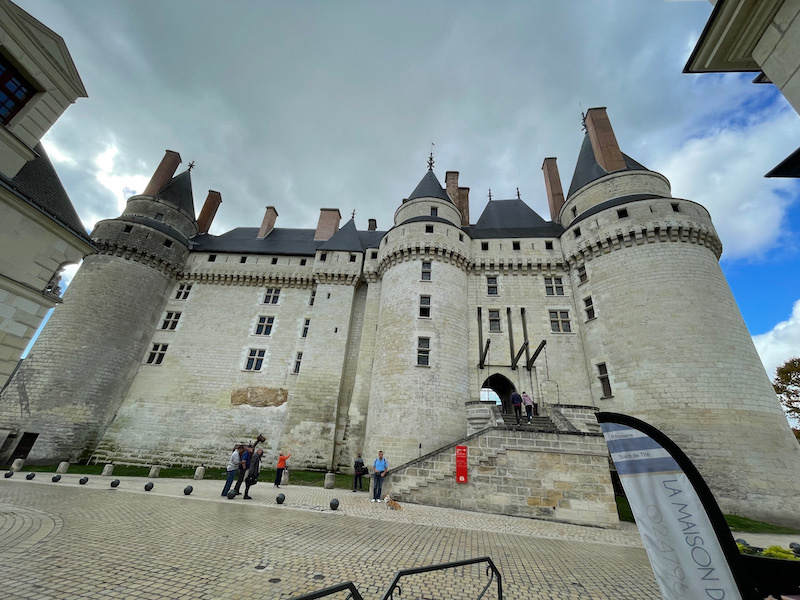
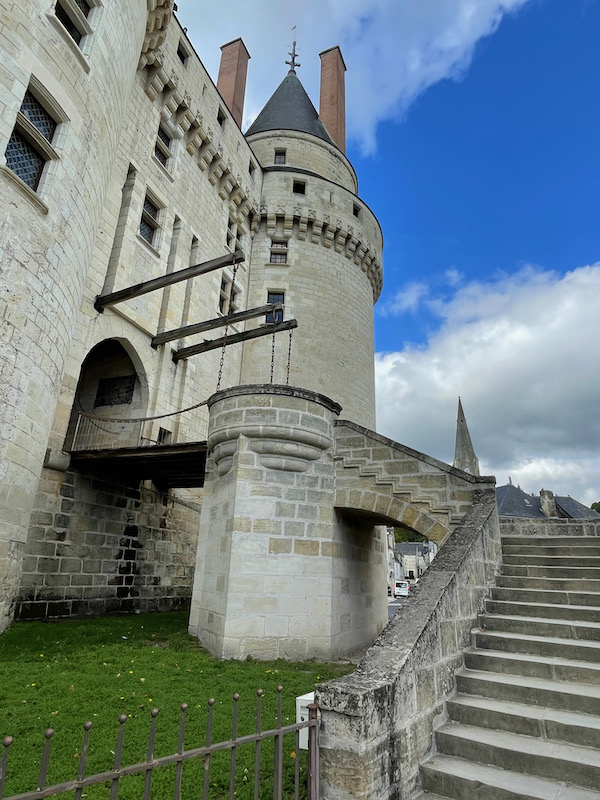
On the other side, the façade corresponds to what a king or a lord would have wanted from his residence: a pleasant place to live, opening to the outside through beautiful windows.
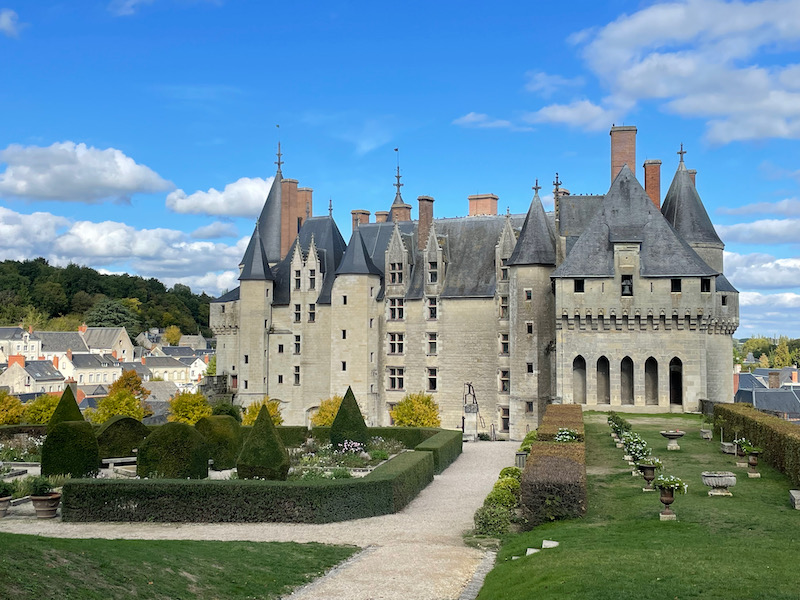
After the end of the 15th century, the château of Langeais went through a variety of owners and was not well maintained. It was bought in 1886 by a businessman named Jacques Siegfried who spent nearly twenty years restoring and refurnishing it. There is a free audioguide using a smartphone app that takes you through the castle, and it is told from the standpoint of Mr. Siegfried. It was donated to the Institut de France in 1904.
This room is typical of a lords room in the middle ages. During this time, the lords would often move around and visit their subjects within the territory. We have seen this in other castles as well. There are lots of wooden trunks, which would be packed with personal effects and moved from place to place. One piece of art that was interesting is the 16th century triptych to the right of the fireplace. On the right-hand side is a representation of the lord and lady seated at a table for a meal. The servant is holding a water pitcher for them to wash their hands with prior to the meal.
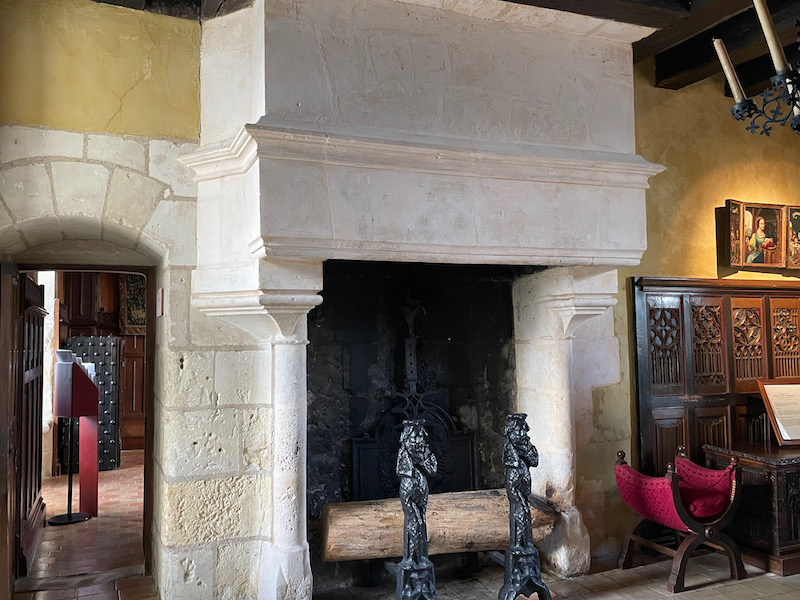
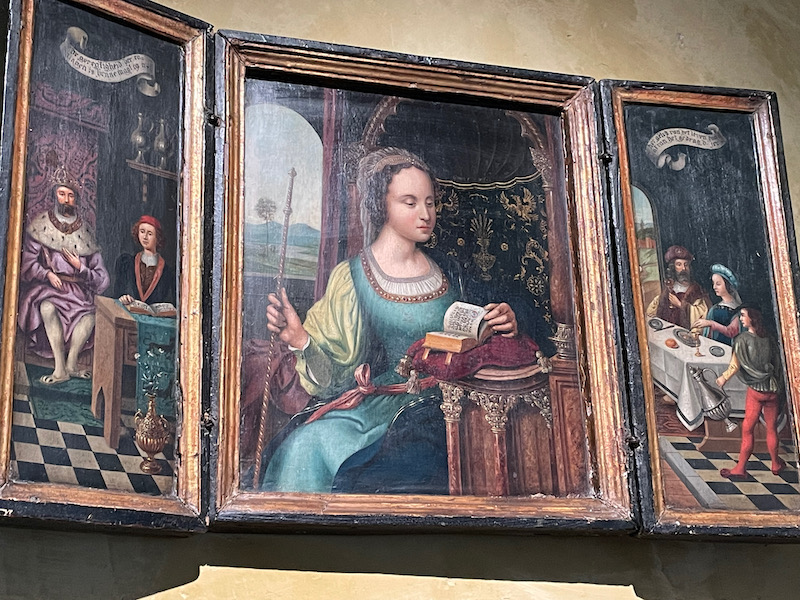
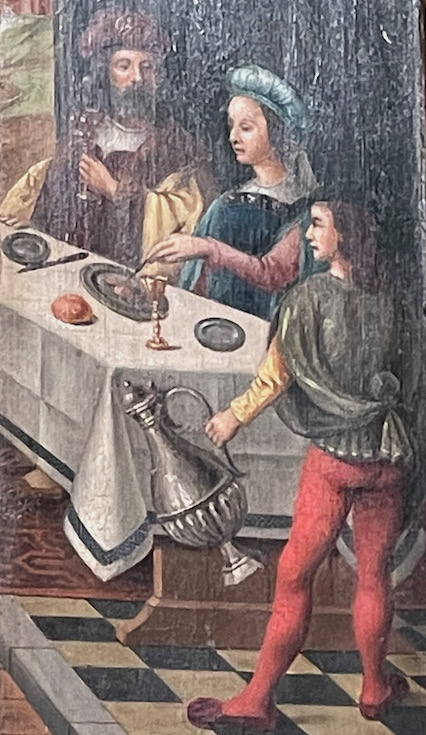
In this room, the audioguide discusses the small intimate wedding of Charles VIII of France and Anne of Brittany, which took place here in 1491. This marriage marked the beginning of the incorporation of the duchy of Brittany into the French kingdom. The marriage contract included a clause that, if the king died without a son, Anne promised to marry the new king, to keep the joint kingdom strong. Anne spent quite a bit of time during her marriage to Charles VIII pregnant, but all 6 children died at birth or at an early age. When Charles VIII died in 1498, Anne then married the new king, cousin, Louis XII. The floor tiles show the fleur-de-lis, the emblem of Charles, along with the ermine tail, which was the emblem of Anne of Brittany. The walls show the initials A (Anne) and K (Karolus for Charles). The motto below this set of initials was Anne's motto, which means "Death rather than dishonor".
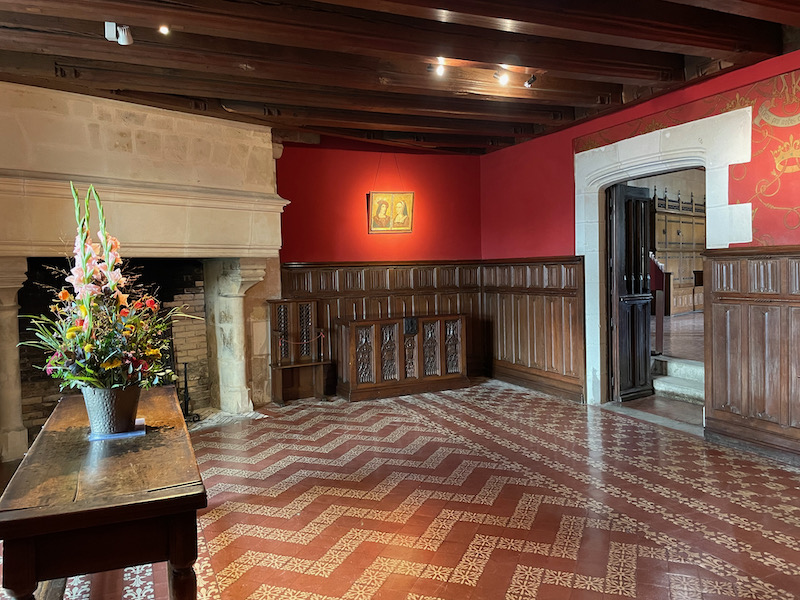
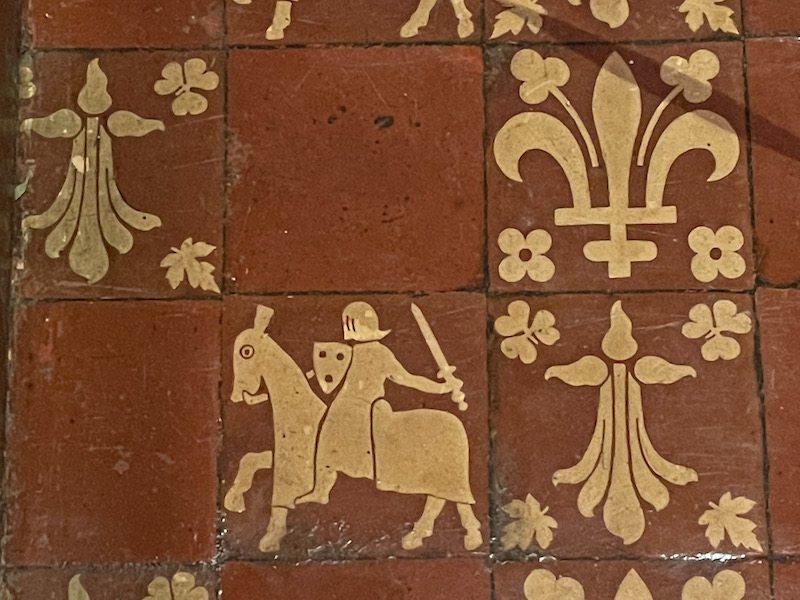
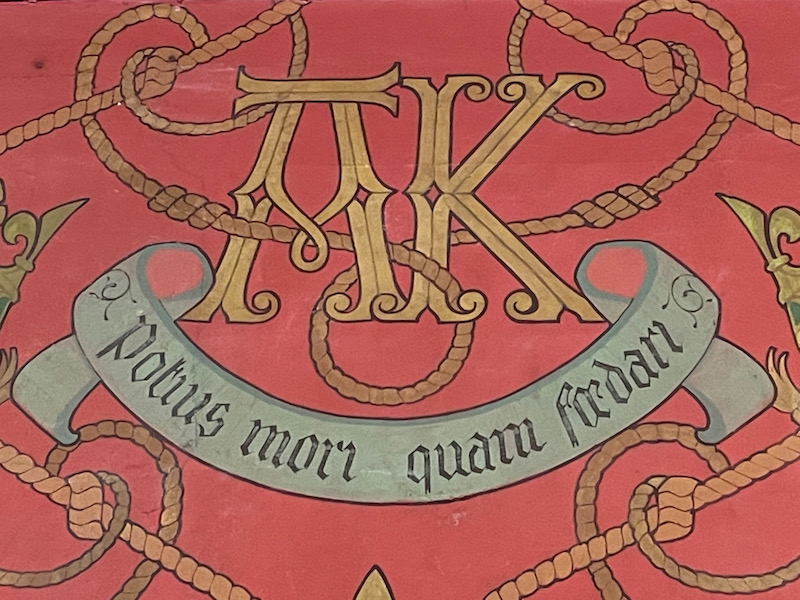
The banquet hall is setup as it would have been in the Middle Ages. The table would have been "moveable" so that it could travel from place to place. It was covered with a tablecloth with an interesting feature ... the napkin was built into the fabric itself! The top of the fireplace is also unique ... it looks like a castle with the parapet and towers on each side.
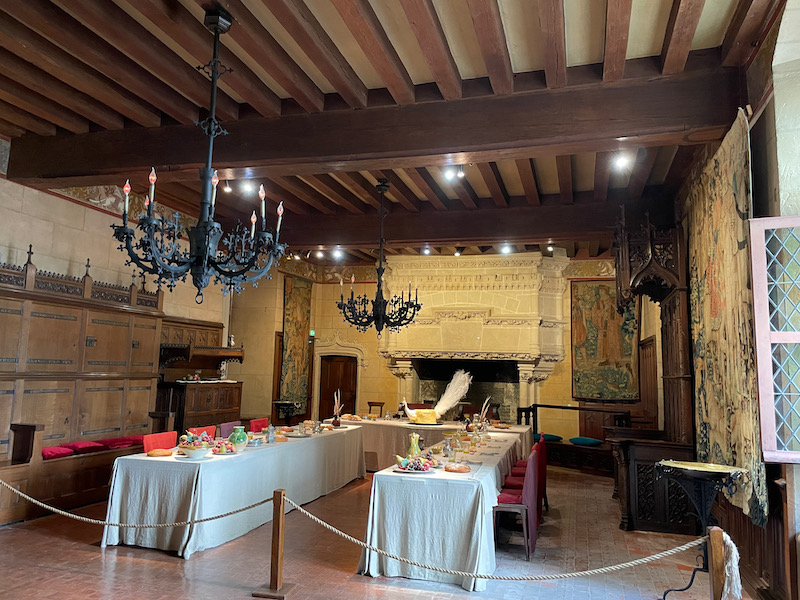
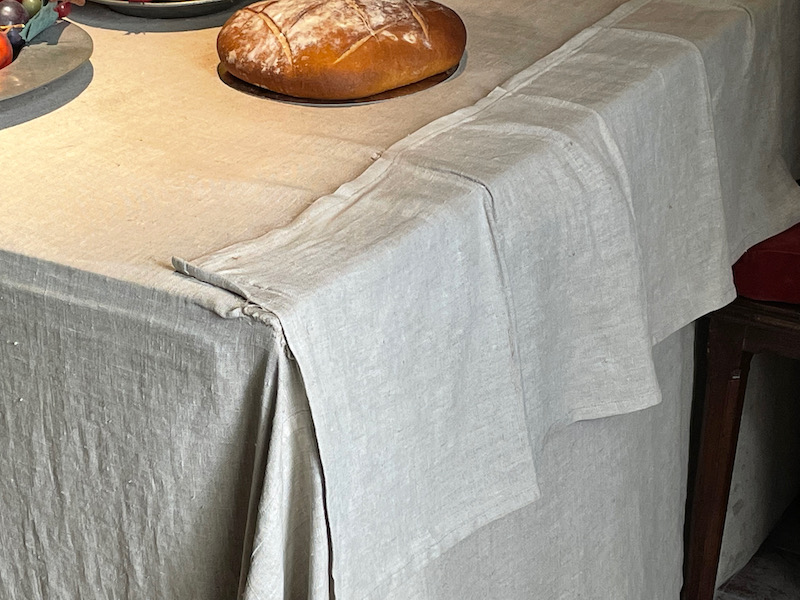
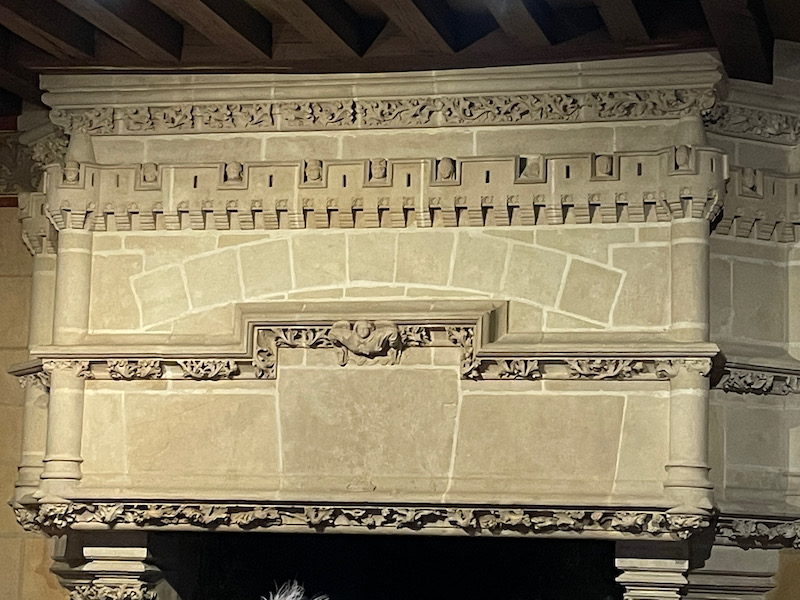
Here is one of the bedrooms. The bed is raised a little on a platform and has curtains around it to keep in the heat while sleeping. The tapestry was created around 1530 and shows how astrology played a significant role in the lives of people in the Middle Ages, noting the 4 zodiac signs around her (Taurus, Gemini, and Cancer).
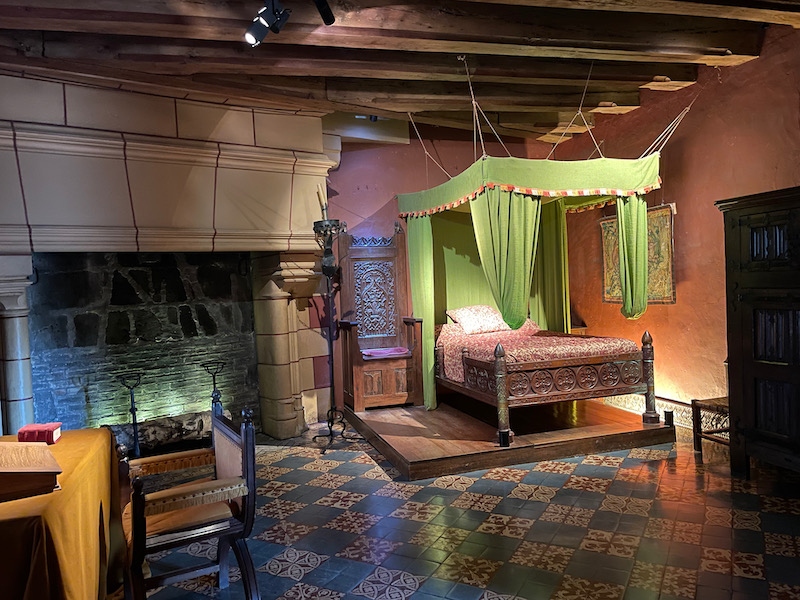
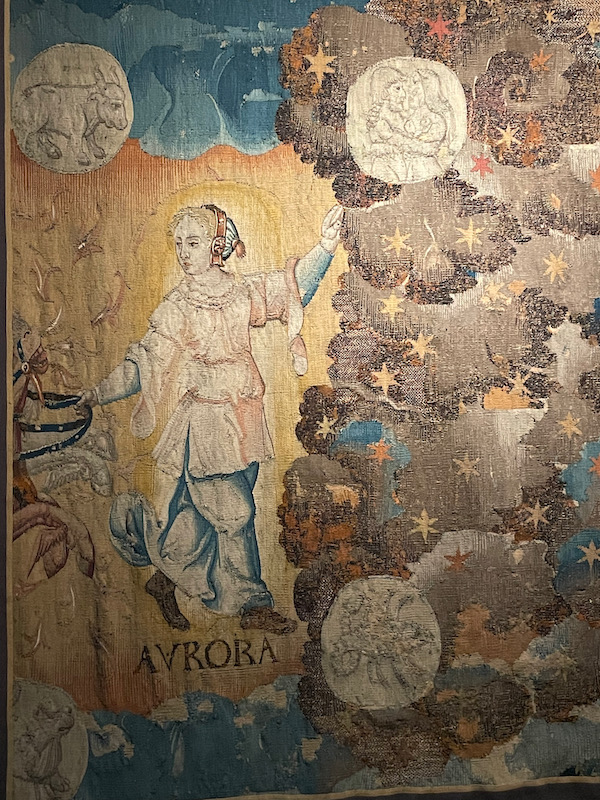
This is a reliquary shrine from the 13th century. The story shown on the outside is that of the wise Virgins and the foolish Virgins, a parable from the New Testament. On one side, you can see the wise Virgins, carrying the extra pot of oil that they brought with them, while the foolish Virgins ran out of oil.
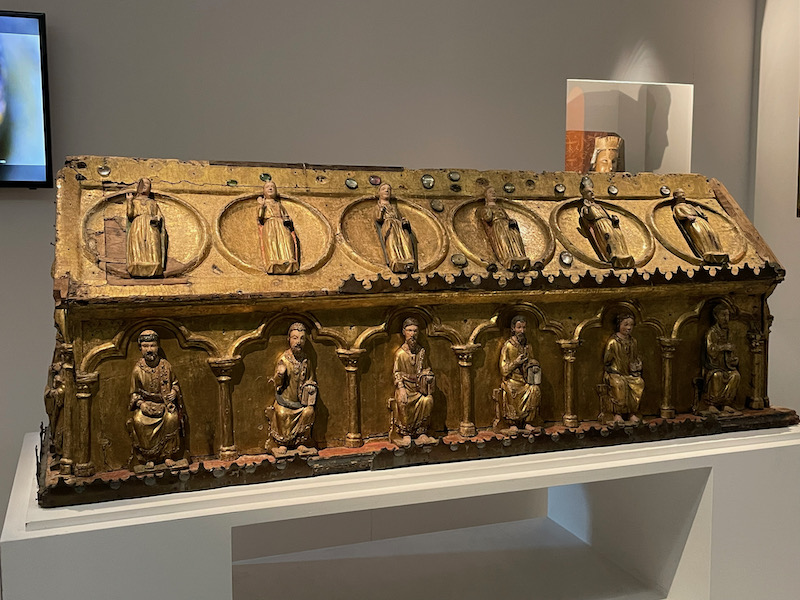
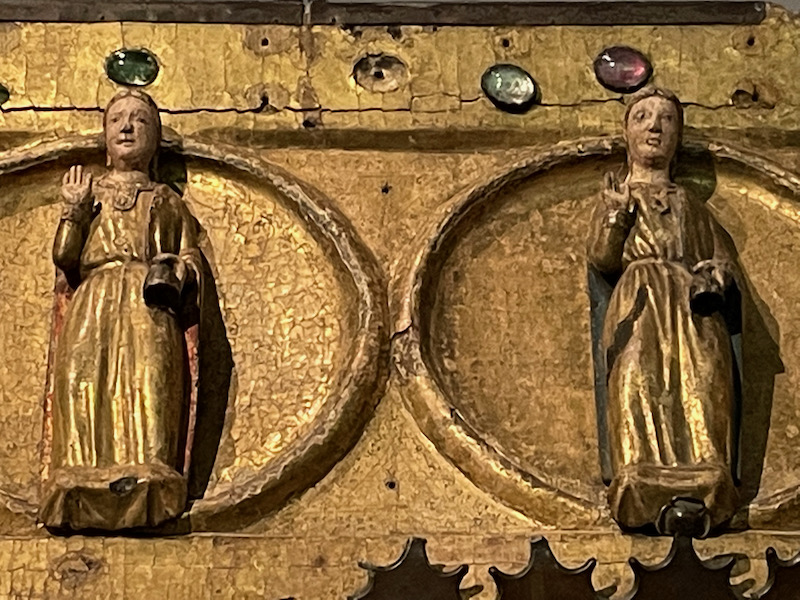
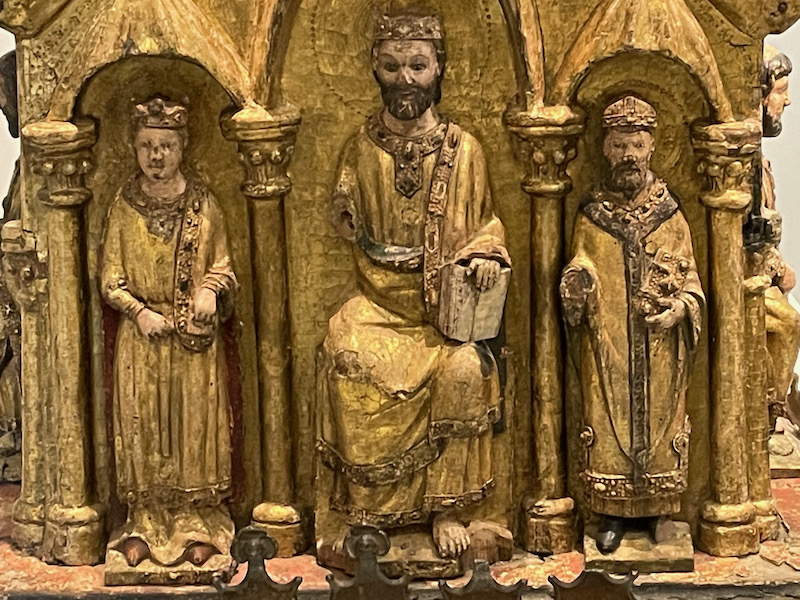
There is a large room that was going to be a chapel, but it was never finished. In this large room are 7 tapestries from the 1500's that are part of a group called "The Nine Worthies", that are named in a novel from 1312. Three of the 9 are from the Old Testament, 3 from Pagan Antiquity, and 3 from modern times. The first one I show is David, who kills Goliath. From Pagan Antiquity, I have Alexander the Great. The one from modern times is Godfrey of Bouillon, who took part in the crusades and played a key role during the capture of Jerusalem in 1099.
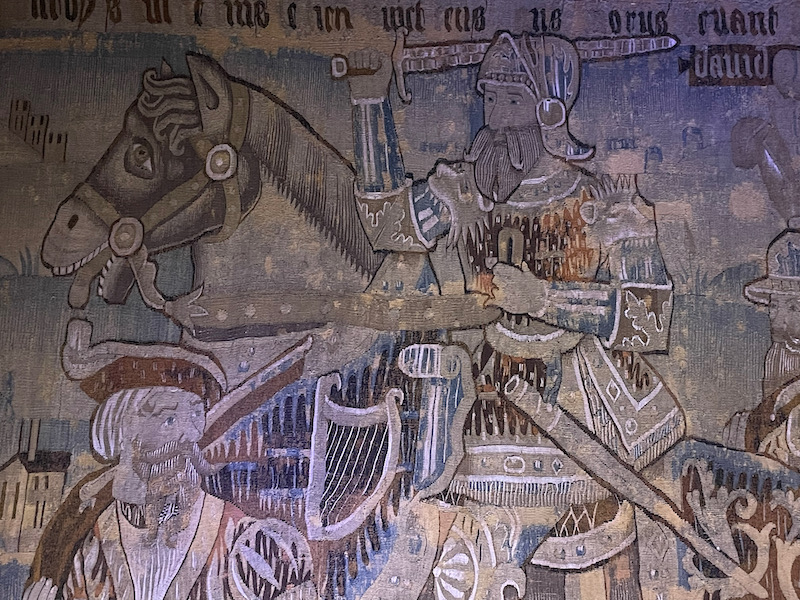
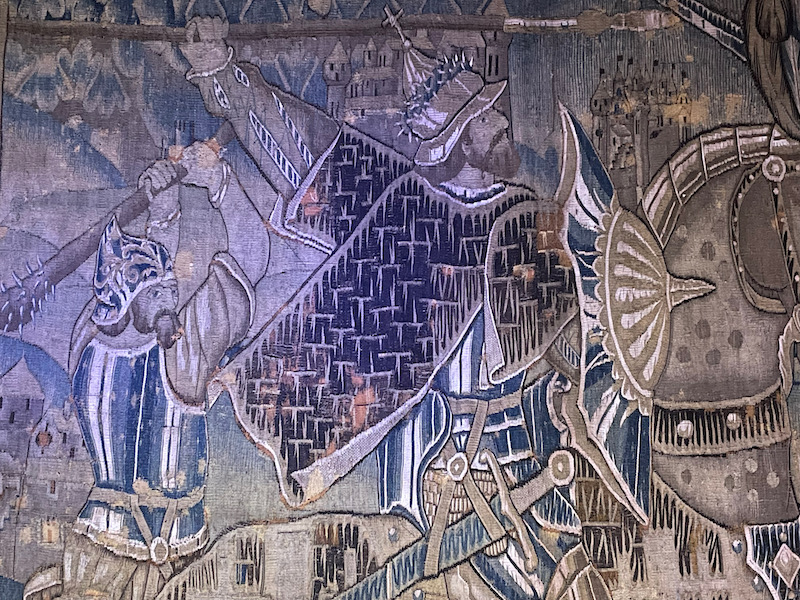
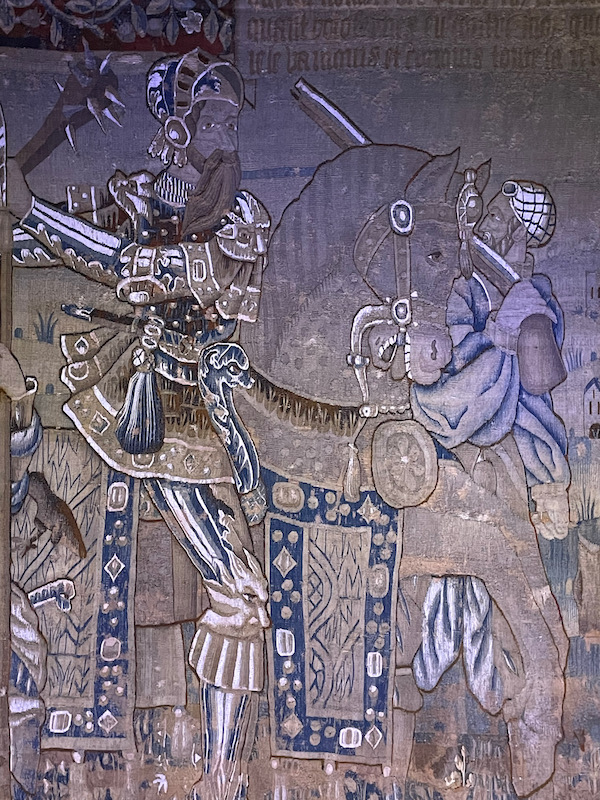
The last thing from inside the castle is a fragment of the 16th century tapestry called "Tapestry of Force". It shows the allegory of Force on a chariot, which is being pulled by a couple of lions. There are also great figures of Roman history, including Mucius Scaevola, a hero of the early Roman Republic who burns his right arm voluntarily after failing to kill the Etruscan king, Porsena. One of the 3 female characters is Tomyris, Queen of Massagentae, who is holding the head of her enemy, the Persian emperor Cyrus, whom she killed to seek revenge for the death of her son.
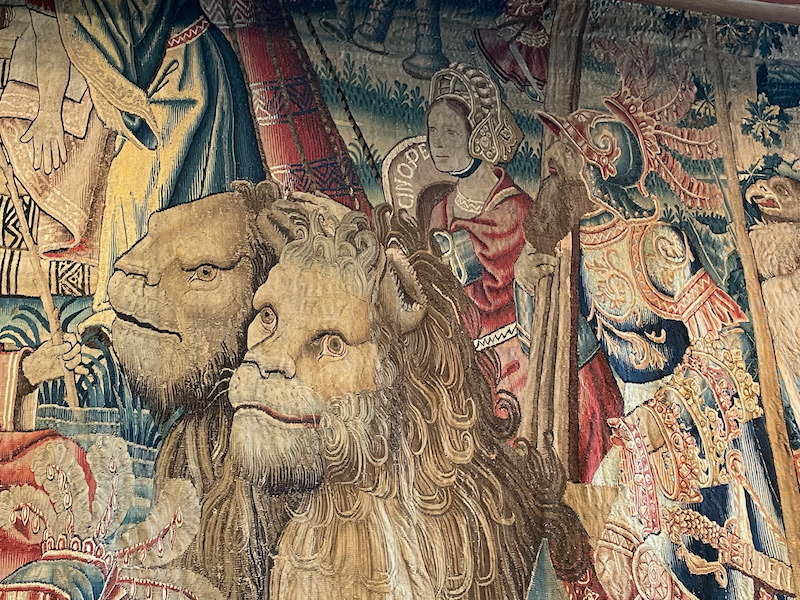
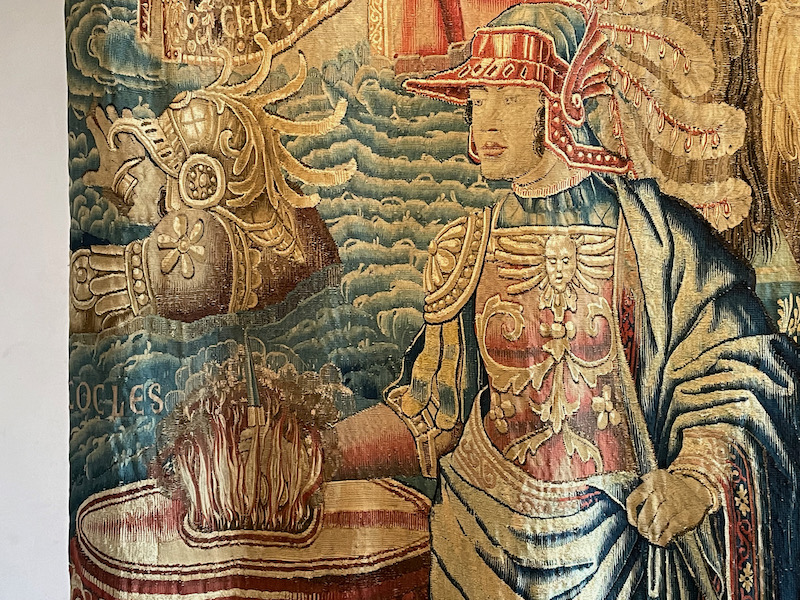
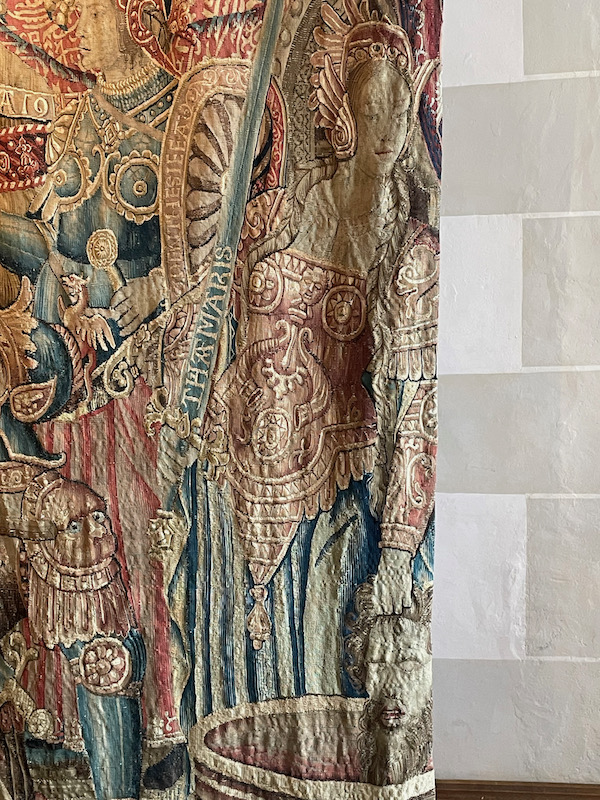
Out behind the chateau is another castle, but this one dates from around 994. Two great lords, the Count of Anjou, Foulques Nerra, and the Count of Blois, Eudes I, fought over the Touraine area. At the end of the 10th century, Foulques Nerra conquered Langeais and founded a fortress on the promontory overhanging the Loire. After lots of fighting, it was ordered destroyed in 1422. While not complete anymore, it is one of the oldest in stone that is still standing (somewhat). On the inside part, there is scaffolding and lifting machines that show the construction methods of builders from the time that it was built.
